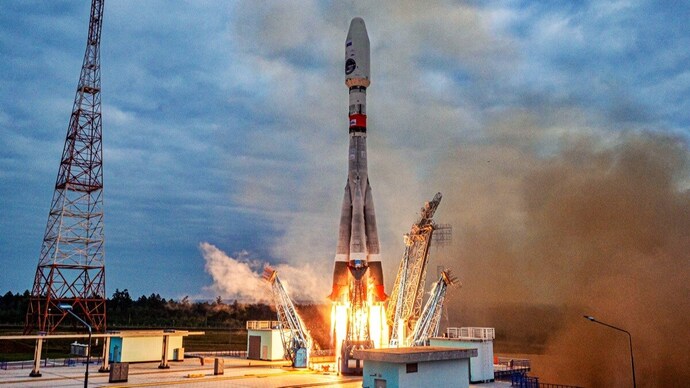- Russia’s “Luna 25” mission is preparing for a soft landing near the lunar South Pole, challenging India’s “Chandrayaan-3” mission to be the first to touch down.
- While Luna 25 has an advantage because to its earlier launch and more direct trajectory, Chandrayaan-3’s unique features and India-Russia collaboration in space activities are equally noteworthy.

Launch and Orbit of Luna 25:
- Luna 25 was launched on August 10, with the goal of entering lunar orbit by August 16.
- The Russian lander is expected to attempt a soft landing on the moon between August 21 and 22, ahead of Chandrayaan-3’s projected landing date of August 23.
Key Factors Affecting Luna 25’s Lead
- Trajectory and Fuel Storage: Due to its lighter payload and improved fuel efficiency, Luna 25 took a straight trajectory.
- Payload Comparison: The lift-off mass of the Luna 25 is 1,750 kg, which is much less than the 3,900 kg of the Chandrayaan-3. The latter is comprised of a Lander-Rover and a propulsion module.
- Lunar Dawn Advantage: The Luna 25 landing site advantages from an earlier lunar dawn, ensuring excellent power generation via solar panels.
Distinctive Characteristics of Chandrayaan-3
- Coated Rover: Unlike Luna 25, Chandrayaan-3 has a rover with a 500-meter range.
- Due to craters in constant shadow, Chandrayaan-3 focuses on soil and water-ice research, particularly near the southern pole.
- Experiment Suite: RAMBHA, ChaSTE, ILSA, and LRA experiments are carried by Chandrayaan-3’s Lander, offering critical insights into the moon’s properties.
Collaboration and rivalry
- India-Russia Space Collaboration: Both countries have considerable space collaboration, such as Russia’s support to India’s Chandrayaan-2 mission’s lander-rover design.
- Gap between Chandrayaan-1 and Chandrayaan-2: Following Russia’s withdrawal, India built its own lander-rover technology, resulting in an 11-year gap between the Chandrayaan-1 and Chandrayaan-2 missions.
Prospects for the Future
- Human Moon trips Race: Following the finding of a water molecule by India’s Chandrayaan-1 in 2008, India, the United States, and China are all aggressively pursuing human moon trips.
- Progression and Obstacles: While India has made progress, countries like as the United States and China have completed landing and sample return missions. India is continuing its attempts to produce larger launch vehicles for more ambitious missions.
Source: https://www.livemint.com/science/news/indias-chandrayaan-3-mission-different-from-russias-luna-25-says-isro-scientist-11691891358673.html#:~:text=Chandrayaan%2D3%20is%20expected%20to,on%20the%20lunar%20south%20pole.
